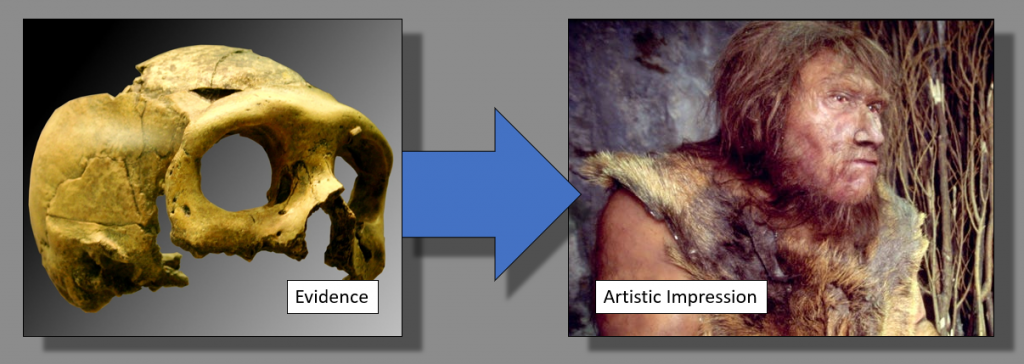Many exaggerations and hoaxes have been related to human evolution based on fossil discoveries. The field of human evolution is filled with sincere researchers thoroughly convinced of their pursuits. Meaning they believe human beings, over several million years, transmutated from apes; therefore, there must be evidence.

The evidence consists of (1) ape bones and fossils; (2) human bones and fossils; (3) a mixture of the two. Many pseudo-scientific practices differentiate the samples, such as skull sizes equating to intelligence, etc. Skulls of individuals deformed by dwarfism (found in caves) are quickly considered new human species. Crowns of human skulls are matched with ape jaws found hundreds of yards apart. Together, minor differences in human skulls (mainly jaws) are arranged to form a timeline. Some samples might be a tooth or a fragment of a bone. Also, ape samples are arranged to form a deeper timeline of supposed transmutational emergence.

Fossils rarely have DNA, and when they do, they are fragments. Therefore, DNA cannot validate the supposed form of older samples (what the living human or ape looked like- outside vast artistic license), but it can be used to separate samples as human or ape. This genetic evidence, when available, has proven to be a “problem” because the samples keep turning up as either fully human (within 99.4% DNA similarity or higher) or fully ape.

Revealingly, many researchers refuse to test their findings for DNA or carbon-14 because they “need” the find to be significant. The lure of more funding, book deals, and fame are all at stake- tests might ruin all that. The colleagues of these researchers are well aware of these practices, and they criticize each other because they want to find the missing link.

Ultimately, we have buckets of human samples and ape fossils arranged within the presumptions of evolution. All the samples could fit in a pick-up truck, and all the supposed transitional samples could fit in a shoebox.
The missing link remains at large, but the pursuit continues because the conclusion has been predetermined.


